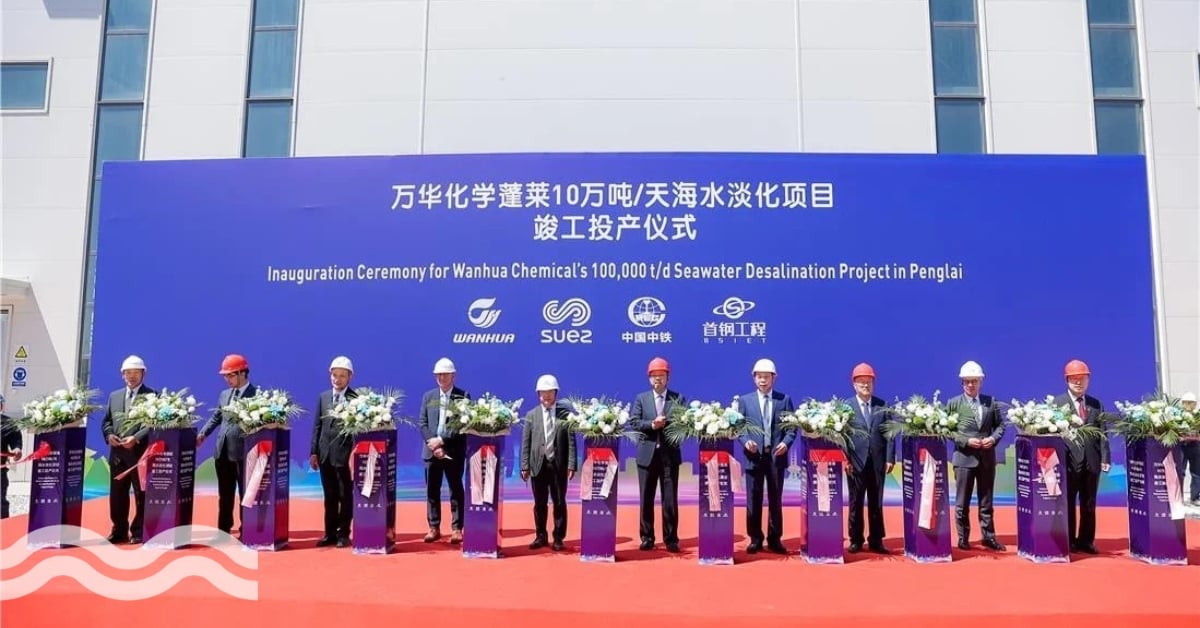VIDEO: Practical advice to enter the Chinese water market

China is gearing up to tackle impending droughts with an ambitious plan centered around new water infrastructure projects. Siveco China’s MD Bruno Lhopiteau shares his advice for businesses looking at entering the Chinese water market and cautions the challenges due to fierce competition both locally and internationally.
Tackling drought
China's response to looming droughts involves ambitious new water infrastructure projects aimed at mitigating the impacts of climate change. Recently released plans entail the construction of a national 'water network' comprising canals, reservoirs, and storage facilities. Officials assert that this network will improve irrigation, reduce the risk of floods and droughts and balance water supply distribution by 2035.
However, experts caution that this approach may come with significant challenges, including potential high costs, environmental disruptions and supply vulnerabilities in certain regions. China faces these obstacles due to its low per capita water resources and uneven distribution.
Historically, to address water demand, efforts include reducing water consumption, enhancing wastewater recycling and tackling pollution. This calls for the implementation of new systems and cutting-edge technology, creating opportunities for companies seeking to enter the water market in the country.
Challenges of entering the Chinese water market
The Chinese water market presents a fiercely competitive landscape for companies aiming to enter. The sector attracts numerous local and international players, making it highly competitive. Well-established local companies and the integration of IT branches within major water corporations further add complexity to the competitive landscape.
Despite the potential benefits of China's ambitious water infrastructure projects, businesses looking to venture into this market must be prepared to navigate these challenges and approach the industry strategically and with a long-term perspective.
Speaking to Aquatech Online, Bruno Lhopiteau, MD of the country’s largest maintenance consultancy, Siveco China, says: “The Chinese market is significant. But one should not expect it to be as accessible as it may seem.
“Not every water company in China may be interested in purchasing your technology, so targeting specific companies becomes crucial,” he adds.
Getting ahead of the competition
Competition in the technology field is tough, with both local and international companies vying for the same market share. “There is often confusion as numerous local Chinese IT companies offer similar services, making it challenging to stand out,” says the MD.
“Even if you have a viable IT solution, you may still face competition from big water companies that have their own IT branches or subsidiaries dedicated to IT services. This internal competition poses an additional challenge,” he says.
Given the competitive landscape, Lhopiteau advises being prepared to enter a tough market. “Proper budgeting and capitalisation of the company are essential for sustainable growth, as it may take at least a year, or even longer, to become profitable,” he says. “Realistic expectations are crucial, and it's practical to plan for zero revenue within the first year.”
To make inroads into the Chinese market, the MD suggests looking for existing international clients with some business operations in China.
“Collaborating with them as potential resellers or system integrators could pave the way for your company's first project. It's essential to build upon existing connections and partnerships to gain a foothold in the competitive market,” he concludes.
China’s diversion projects
Over the past five years, China has embarked on more than 100 diversion projects, resulting in substantial investments in fixed water assets. Among the components of the new plan is the expansion of the South-North Water Diversion Project (SNWDP). However, experts raise concerns that these colossal plans may merely shift water shortages from one region to another, without adequately resolving the underlying issues.
The ongoing pursuit of mega-projects comes with unforeseen consequences, necessitating additional infrastructure projects to address associated challenges. For instance, the transfer of water to the north via the Danjiangkou reservoir has depleted water downstream on the Han River, prompting the need for another 7.6 billion euro project to connect Danjiangkou with the Three Gorges reservoir. This chain reaction effect has been observed in various instances, requiring substantial investments and adjustments.
Alternative water projects for China
Amidst these concerns, experts propose alternative approaches that focus on wastewater recycling, desalination, and demand reduction, which may prove more effective and sustainable. Given that around 60 per cent of China's water supplies are used for agriculture, exploring efficiency improvements like crop switching and alternative irrigation methods could yield significant benefits according to experts.
China's plan to tackle impending droughts through new water infrastructure projects offers both opportunities and challenges for businesses entering the market. Fierce competition from local and international players makes market entry tough. To succeed, companies need a long-term perspective, collaboration with existing clients in China and exploration of sustainable water management approaches like recycling and demand reduction.
Striking the right balance is key to contributing to China's water management efforts and finding growth opportunities in this critical sector.


